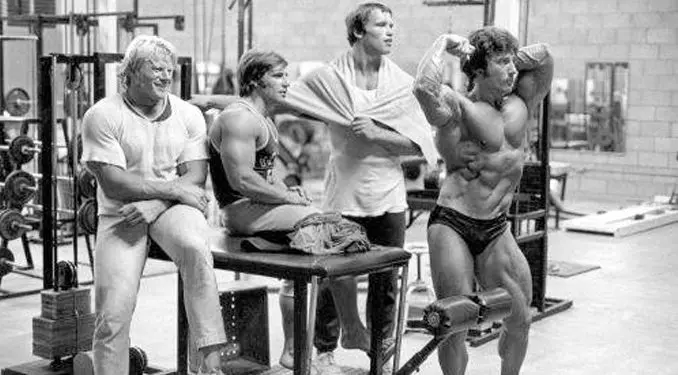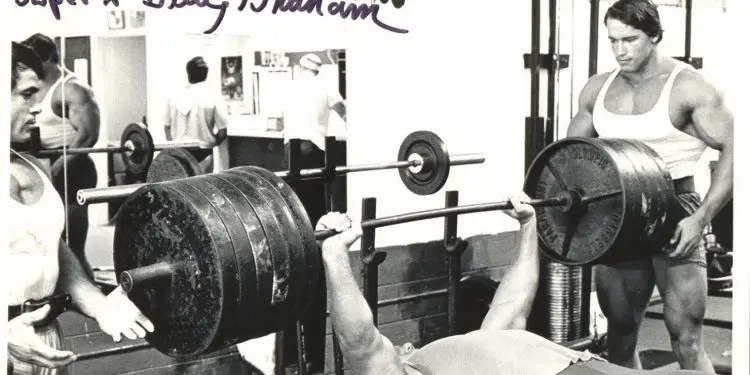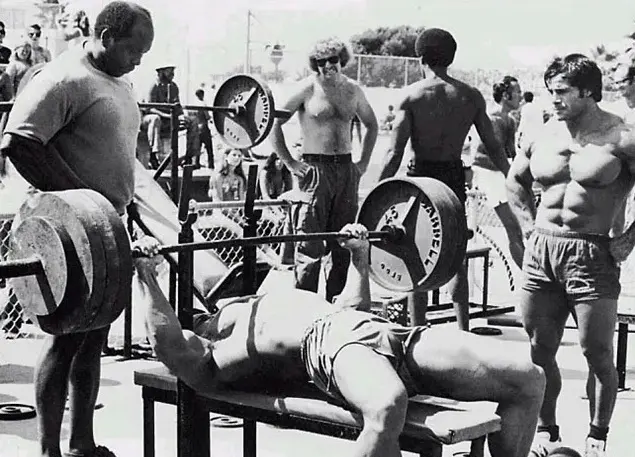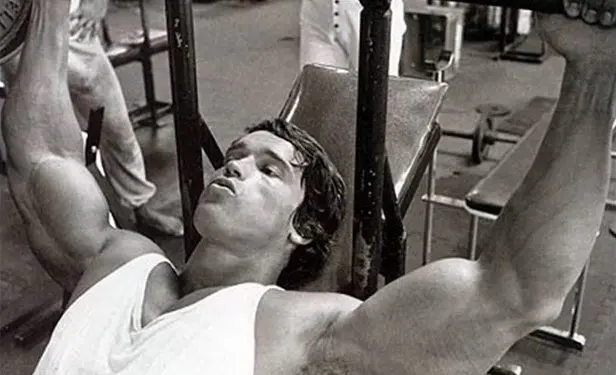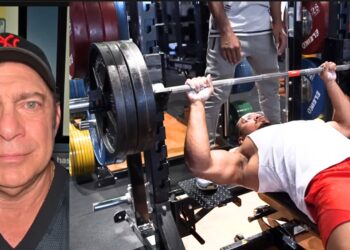The bench press is a very popular exercise. Almost everyone who lifts weights bench presses. Bodybuilders use it to build bigger chests, it’s the second lift in powerlifting competitions, and regular guys do it to build better-looking upper bodies. It’s also part of the NFL combine – the selection process for professional football players.
The bench press involves all your major upper-body pushing muscles, specifically these muscles:
- Pectoralis major – pecs for short, this is the main chest muscle
- Anterior deltoids – the muscle on the front of your shoulders
- Triceps brachii – the muscles on the back of your arm, responsible for extending your elbow
If you want to bench press more weight, you need to pay attention to your technique and spend time working on any weak muscles that could be holding you back. Here are three quick fixes and three long-term strategies for boosting your bench press.
Three tips for increasing your bench press today
The best way to increase your bench press is to get stronger, but that can be a long process. There is no shortcut to strength, but here are three things you can do today to boost your bench press.
1- Use your legs
The bench press is an upper body exercise that mainly involves your chest, shoulders, and triceps. However, that doesn’t mean you should forget about your legs when you do this exercise. In fact, using your legs could add pounds to your bench press instantly.
A lot of exercisers lift their legs when they bench press. Studies show that this increases pec muscle activation (1) which is good for building muscle. This is because it destabilizes your body so you’ll have to work harder to control the bar.
Level Up Your Fitness: Join our 💪 strong community in Fitness Volt Newsletter. Get daily inspiration, expert-backed workouts, nutrition tips, the latest in strength sports, and the support you need to reach your goals. Subscribe for free!
But, lifting your legs also reduces the amount of weight you can lift. Because of this, if you want to bench more weight, you need to keep your feet on the floor and use your legs more actively. This is called a leg drive.Leg drive stabilizes your body on the bench. With less wobbling, you won’t have to waste vital energy trying to keep the bar stable. Instead, you’ll be able to put all your effort into pressing the bar up. This will allow you to lift bigger weights.
Leg drive involves pushing your feet hard into the floor throughout each rep. This doesn’t mean your hips should come off the bench. In powerlifting, this would count as a failed lift. Instead, push your feet down and keep your butt on the bench to create the most stable lifting platform you can. If you move your feet during your reps, you are not maintaining proper leg drive. Keep your feet pushed into the floor for the duration of your set.
2- Squeeze your shoulders back and lift your chest
Where the leg drive helps to stabilize your lower body, squeezing your shoulders back does the same thing for your upper body. It also puts your shoulders in a safer position and will reduce your risk of a shoulder injury.
To get your shoulders in the right position:
- Lie back on the bench so that your eyes are directly under the bar
- Grip the bar and then, before you unrack it, pull your shoulders back and push them into the bench
- Arch your lower back slightly to lift your chest up toward the bar
- Unrack the bar and try to keep this tension in your upper body
- Continue your set as normal while trying to keep your shoulders pinched together
Lifting your chest up also reduces the distance the bar has to travel. This will allow you to lift more weight.
3- Grip the bar as tight as you can
A lot of exercisers use a thumbless or false grip when they bench press. This grip is very comfortable but could also reduce the amount of weight you can bench press. Instead, when you bench press, wrap all your fingers and thumb around the bar and grip it as tightly as you can. Imagine you are trying to leave your fingerprints in the metal; that’s how hard you should squeeze.
This will create tension all through your wrists and forearms as well as down your arms into your shoulders. All that tension will help stabilize your elbows and shoulders, plugging any energy leaks that would otherwise reduce your strength.
Three long-term strategies for increasing your bench press
Building a bigger bench press won’t happen overnight. If you are serious about lifting more weight or doing more reps, you need to train for your goal. Here are three training methods that will increase your bench press performance.
Level Up Your Fitness: Join our 💪 strong community in Fitness Volt Newsletter. Get daily inspiration, expert-backed workouts, nutrition tips, the latest in strength sports, and the support you need to reach your goals. Subscribe for free!
1- Bench press more often
Most gym-goers bench press once a week, usually as part of their chest workout. While that will help you make progress, if you want to improve more quickly, you should bench press twice a week.
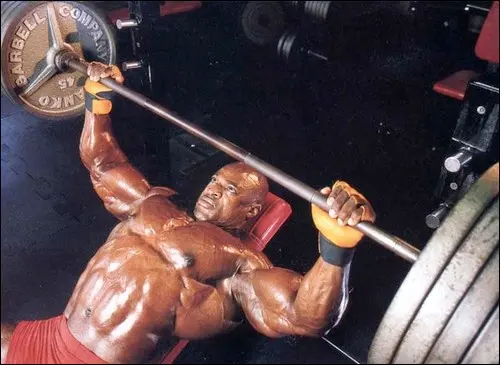
Benching twice a week gives you more time to work on your technique and strengthen your pectoralis major, anterior deltoids, and triceps brachii. This doesn’t mean you should repeat your usual bench press workout twice a week. Studies (2) have shown that exercise variety is very important for building strength and muscle size. Instead, you should do two different bench press workouts each week, separated by several days.
For example:
Monday:
- Bench press – 5 sets of 5 reps (heavyweight)
- Narrow grip bench press – 3 sets of 8 reps (moderate weight)
- Push-ups – 3 sets of 20 (lightweight)
Thursday:
- Wide grip bench press – 8 sets of 8 reps (moderate weight)
- Dumbbell bench press – 3 sets of 12 reps (moderate/lightweight)
- Chest press machine – 3 sets of 20 reps (lightweight)
2- Do paused bench presses
A lot of bench pressers lower the weight very fast and then bounce it off their chests. This allows them to lift heavy weights, but tissue and joint elasticity and momentum end up doing more work than the muscles.
Benching more slowly and deliberately will keep the tension on the muscles longer, producing a better training effect. In other words, you won’t be able to cheat!
One of the best ways to eliminate all possibilities of cheating, making each rep as productive as possible, is to do paused bench presses. Paused bench presses are a big part of powerlifting training and powerlifters are arguably the best bench pressers in the world.
Here’s how to do paused bench presses:
- Unrack the bar as normal
- Lower the bar under control to your chest
- Let the bar lightly touch your chest but do not relax
- Maintain muscular tension and hold the bar there for two seconds
- After your pause, push the bar up as normal and then repeat
Don’t be surprised if you can’t lift as much weight or do as many reps as usual. That’s normal. However, after a few weeks, your bench press will start to improve, and your paused bench press weights will exceed your previous personal records.
3- Strengthen your upper back
If you want to bench press more weight, you need to strengthen your upper back. The bench press is undeniably a chest, shoulder, and triceps exercise, but it’s mainly the muscles of your upper back that stabilize your shoulders.

The more rock-steady your shoulders are, the more weight you’ll be able to lift, and the less likely you are to suffer injuries. In addition, a strong upper back means you’ll be able to pull your shoulders back harder and longer, further increasing that all-important stability.
The best upper back exercises for a bigger bench press are rows because they work the opposite muscles to the bench press. Two great exercises are:
Face pulls:
- Set an adjustable cable pulley machine to chest height
- Attach a rope handle
- Grab the ends of the handle with your thumbs nearest the rubber stoppers
- Step back and straighten your arms. This is your starting position
- Bend your arms and pull your thumbs back to your ears. Pull your shoulders back and try to keep your elbows up
- Extend your arms and repeat
Band Pull Aparts:
- Hold a resistance band with an overhand, less-than shoulder-width grip
- Raise your arms in front of you to shoulder-height
- Open your arms and stretch the band out across your chest
- Return to the starting position and repeat
Conclusion
If you want a bigger bench press, you’ll need to work for it. Spend time fixing your bench press technique and strengthening the muscles in your upper body – your chest and your back. Work hard and, in a few months, you’ll have a much more impressive bench press.
References:
- Muyor JM, Rodríguez-Ridao D, Martín-Fuentes I, Antequera-Vique JA. Evaluation and comparison of electromyographic activity in the bench press with feet on the ground and active hip flexion. PLoS One. 2019;14(6):e0218209. Published 2019 Jun 14. doi:10.1371/journal.pone.0218209
- 1. Journal of Strength and Conditioning Research: November 2014 – Volume 28 – Issue 11 – p 3085–3092, doi: 10.1519/JSC.0000000000000539
Also, read more unique ways to improve your bench press here.

